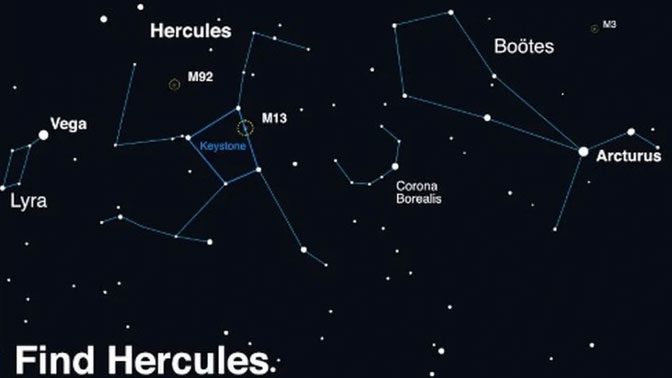An event that astronomers are calling a “once-in-a-lifetime” occurrence is about to happen. The star T Coronae Borealis is set to light up the sky in the coming days.
The last eruption of the star T Coronae Borealis, also known as “the Fiery Star,” took place in 1946. In fact, this is a binary system consisting of two stars located 3,000 light-years away from Earth. This star system is a recurrent nova, and we can observe it from Earth roughly every 79-80 years.
The appearance in 1946 involved the activity of an extremely hot red giant star and a cold white dwarf. It is predicted to reoccur in September 2024.
This star system is located in the constellation Corona Borealis, a crescent-shaped arc of stars to the west of the constellation Hercules. Stargazers can find it situated between the bright stars Vega and Arcturus.
When this eruption is observed from Earth, it will be a stunning and rare sight. The exact date and time of the explosion have yet to be determined, but according to Professor of Astrophysics Bradley Schaefer at Louisiana State University, current signs of “dimming before the eruption” indicate that the explosion is imminent.
“Dimming before the eruption” is a phenomenon where the brightness of certain celestial bodies decreases sharply about a year before an outburst. In February 2023, the American Association of Variable Star Observers (AAVSO) announced that T Coronae Borealis had begun to fade.

Diagram of the stars Vega, Hercules, Corona Borealis, and Arcturus in the sky (Image: NASA).
The star T Coronae Borealis typically has an apparent magnitude of +10, which according to NASA is “too faint to be seen with the naked eye,” but it will increase to +2 during the eruption.
According to Professor Schaefer, who has spent decades studying this star, the chances of seeing this explosion with the naked eye are extremely high. He stated that “it will truly resemble a hydrogen thermonuclear bomb like in the Oppenheimer movie.
According to NASA, the difference between nova events and supernovae is that in a recurrent nova, the dwarf star remains intact during the explosion. In contrast, a supernova occurs when a star dies and disintegrates in a final outburst.
There are several recurrent novas with very short cycles, but typically we do not see them repeat within a human lifetime. The star T Coronae Borealis is one of ten recurrent novas in the Milky Way with a cycle of less than one century.
NASA states that during the explosion, this star system will shine with brightness equivalent to the North Star (Polaris) and may remain bright for several days to a week.
The exact timing of this remarkable astronomical explosion has yet to be determined, but when it occurs, it is sure to inspire many sky enthusiasts.
Dr. Rebekah Hounsell, a specialist in nova events at NASA’s Goddard Space Flight Center, remarked that: “This is a unique event that will create many new astronomers, providing young people with a cosmic event they can observe, ask questions about, and gather data for themselves.”
“It will inspire the next generation of scientists,” she said.





















































